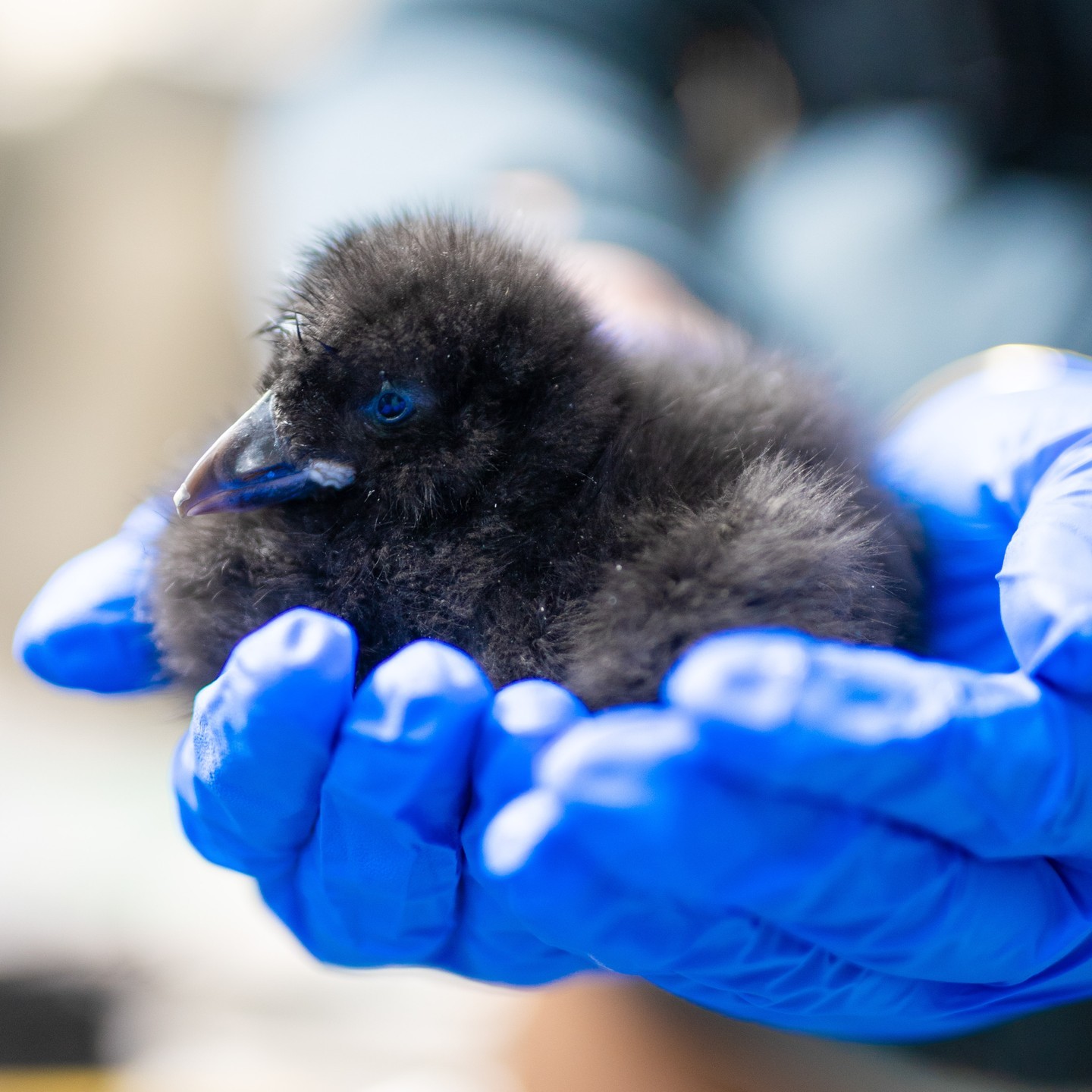Summary:
1. Denali and Aluetian, the horned puffins, have hatched an egg at the ASLC after a year.
2. The puffling will stay in the burrow with its parents until it is ready to fly.
3. Horned puffins are fascinating seabirds known for their unique appearance and behaviors.
Denali and Aluetian Hatch an Egg: A Puffling’s Journey
Welcome to this week’s *Bird of the Week* post with an exciting announcement! Denali and Aluetian, the charismatic horned puffins at the ASLC, have successfully hatched an egg. In this article, we will take a closer look at the life of these intriguing seabirds and their newest bundle of joy. Join us on a journey into the fascinating world of Denali and Aluetian and their precious puffling!
1. The Arrival of the Puffling:
It’s a celebration time at the ASLC as Denali and Aluetian, our beloved horned puffin pair, have welcomed a puffling into their lives. This adorable newborn marks the first hatching of a puffling at the ASLC since 2020. The puffling, however, won’t be exploring the habitat just yet. Instead, it will remain in the safety of its burrow alongside its doting parents until it is old enough to take flight.
2. Understanding the Horned Puffins:
Let’s take a moment to appreciate horned puffins’ unique and charismatic nature. These striking seabirds boast striking features, including their bold black and white plumage and distinctive bright orange beaks. Named after the curved fleshy “horns” on their heads, horned puffins exhibit fascinating behaviors that make them stand out among their avian counterparts.
3. Seabird Guardians: Nesting and Mating Rituals:
Denali and Aluetian, like other horned puffins, are committed and devoted parents. They build their nests, often in areas inaccessible to predators, such as cliffs or rocky crevices, using a combination of soil, vegetation, and their guano. Puffins are monogamous, and pairs like Denali and Aluetian mate for life, returning to the same nesting site each year to raise their young.
4. Dive, Glide, and Snatch: Diving Abilities:
One of the most awe-inspiring qualities of horned puffins is their exceptional feeding technique. These seabirds are expert divers, capable of plunging underwater to depths of up to 200 feet in search of small fish, crustaceans, and invertebrates. Their wings become powerful flippers underwater as they maneuver with agility, often using their wings for propulsion as they chase their slippery prey.
5. Honing Puffin Parental Skills:
Denali and Aluetian are in their element as parents, tirelessly nurturing and protecting their puffling. Both parents play vital roles in the rearing process, with alternating duties such as incubation shifts and feeding responsibilities. The puffling relies entirely on its parents for survival, receiving a diet rich in small fish to fuel its growth. As the puffling matures, it will develop flight feathers, gradually preparing for its grand debut outside the burrow.
Conclusion:
As we celebrate the arrival of Denali and Aluetian’s puffling, we are reminded of the captivating wonders of nature and the significance of conserving diverse wildlife. The horned puffins exemplify the resilience and beauty found in our planet’s ecosystems. Let us take inspiration from these remarkable seabirds as we work together to preserve the habitats they depend on. Stay tuned for further updates on Denali, Aluetian, and their precious puffling. Together, we can ensure a brighter future for all species that call our planet home.
Remember to leave your comments and questions below, and don’t forget to share this exciting news with fellow nature enthusiasts!
*****
Source Description
Denali and Aluetian, the horned puffins, have an announcement for this week’s *Bird of the Week* post! 🧡
This dynamic pair of horned puffins hatched an egg last week! You will not see this little one roaming the habitat just yet, as they will remain in the burrow with their parents until they are old enough to fledge. This is the first puffling hatched at the ASLC since 2020.

